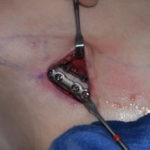Technical Strategies – Frontal Bossing Reduction Through a Scalp Incisional Approach
Frontal bossing is a not uncommon forehead condition marked by variable amounts of upper frontal bone protrusion. This can appear as smaller bilateral concentric horns or as an overall larger convexity of the whole forehead. Such frontal bone development throws the whole forehead out of aesthetic balance for either male or female and becomes an Read More…


